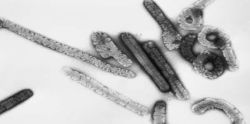Bioengineers and scientists at Pennsylvania State University have developed an acoustofluidic pump that is powered by a piezoelectric transducer. The pump utilises the acoustic streaming effects generated by the oscillation of tilted sharp-edged structures that are hundreds of micrometres in length and that are constructed onto the sidewall of a microfluidic channel made of polydimtehylsiloxane (PDMS).
The study has been published in the journal Lab-on-a-Chip and was funded by National Institutes of Health, the National Science Foundation and the Penn State Centre for Nanoscale Science. The study demonstrated that a smart microfluidic design and low-power acoustic waves can deliver fluids precisely and reliably.
It is believed that lab-on-a-chip technologies can revolutionise the healthcare industry and can provide cost-effective, high-performance miniature biomedical diagnostic devices. This pump could prove to be very useful since the need for a reliable, inexpensive and programmable pump is crucial for lab-on-a-chip devices and could go a long way in helping to improve the diagnosis of many life-threatening diseases as well as making it easy and affordable.
This pump was designed by bonding a single-layer PDMS channel onto a single glass slide. A piezoelectric transducer was then attached adjacent to it using a thin layer of epoxy. The PDMS channel has been designed to be a rectangular recirculating channel that has four portions: left channel, right channel, upper channel, and lower channel. The actual pumping region is the lower channel which is designed with 20 tilted sharp-edge structures on the sidewall, 10 on each side. The other three channels are straight channels with no structures.
The transducer is
activated by amplified sine wave signals from a function generation. An
amplifier has been used to acoustically oscillate the sharp-edged structures in
order to generate streaming effects.
According to Tony Jun Huang, PhD, an engineering professor and senior author of this study, “Our pump is quite unique. It’s reliable and programmable, with a minimum of hardware, yet highly precise. The flow rates can be tuned across a wide range, from nanoliters per minute to microliters per minute. The permanent equipment for the total lab-on-a-chip system, including off-the-shelf electronics, could cost as little as about USD 25.00 to make, and the disposable chip could cost as little as USD 0.10. Although slightly more expensive than paper-based diagnostics, the system is far more versatile and precise, enabling quantitative analysis of, for example, human immunodeficiency virus (HIV), hepatitis, cancer, infectious diseases, cardiovascular diseases.”
Source: Lab Medica
Image Credit: Po-Hsun Huang and Tony Jun Huang























